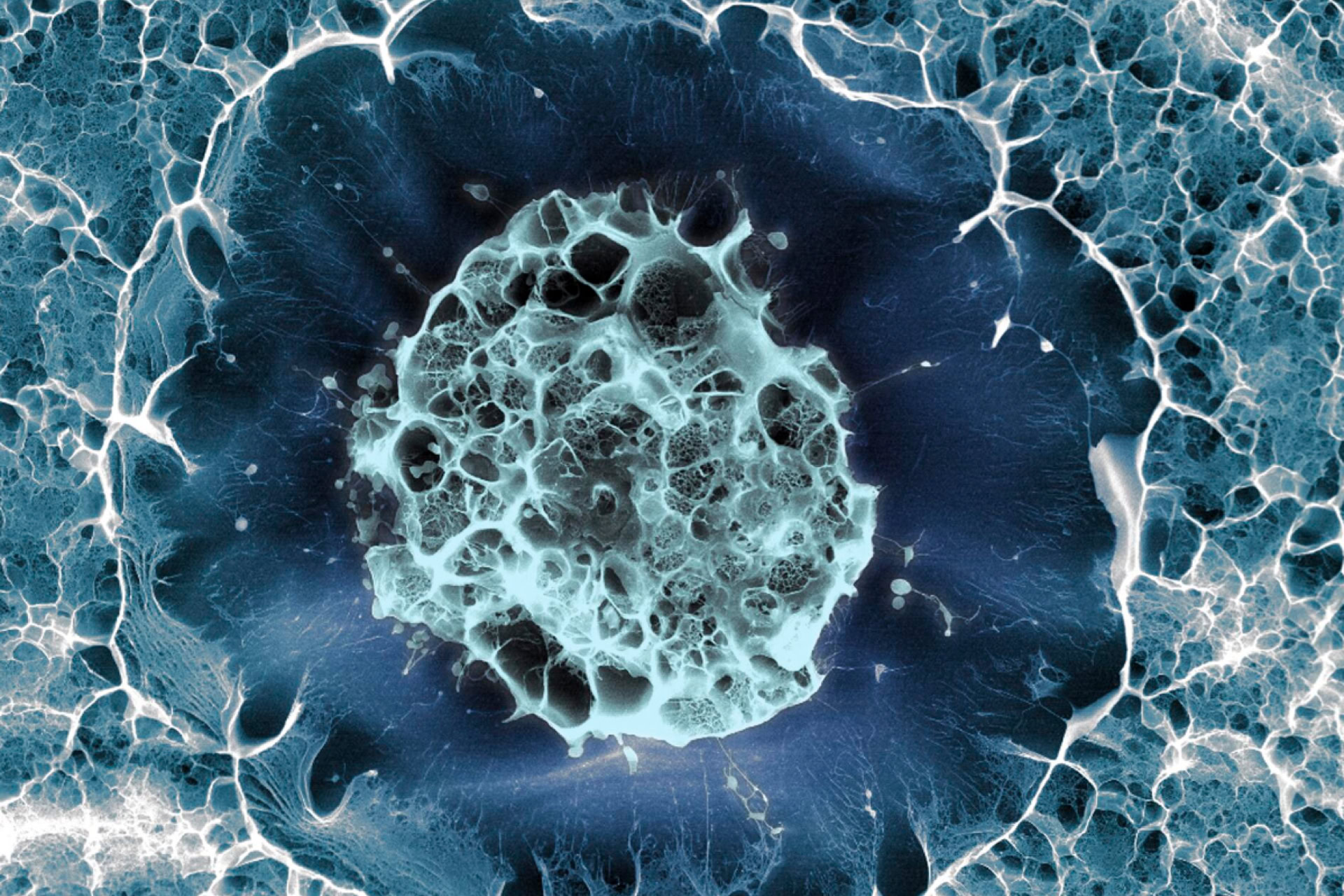Injecting embryonic stem cells (ES) into mouse embryos can correct serious heart defects, US scientists say. The researchers, who published their findings in the journal Science, also found that injecting ES cells into healthy female mice could prevent the same defect appearing in some of their future offspring. It seems that chemicals produced by the cells crossed the placenta, and restored normal heart cell growth in these animals. The study suggests that such 'growth factor' chemicals produced by stem cells could potentially be used to treat human diseases.
The team, based at the Memorial Sloan-Kettering Cancer Center in New York, studied 'knock-out' mice bred to lack three crucial growth genes. Such animals usually die before birth, because they have major heart defects. But the scientists found that they could 'rescue' the affected mice, by injecting as few as 15 mouse ES cells into embryos at the blastocyst stage. However, it seems as though the ES cells correct the defect by producing growth factor chemicals that trigger normal heart development, rather than turning into new heart cells. When they injected female mice with ES cells, the heart defect was not present in all of their future offspring, suggesting that the growth factors had crossed the placenta to heal the embryos.
Scientists are hoping to develop new therapies for a range of diseases, by exploiting the natural ability of ES cells to grow into any type of body tissue. However, says team leader Robert Benezra, while researchers have known for some time that stem cells can act as replacement cells, 'now it seems that they are also capable of correcting their neighbours'. The scientists think that two different growth factors are affecting the mouse embryos to correct the heart defects - IGF-1, which can cross the placenta, and WNT5a, which only works when injected directly into the embryo.
The findings do not have any immediate applications for treating congenital heart disease in humans, since the cells need to be injected into the embryo at a very early stage of development, before the heart starts to form. Injecting ES cells into women before pregnancy is also not an option, because they could grow into a tumour. However, it might one day be possible to correct fetal heart defects, and perhaps adult heart disease, using injections of the growth factors produced by the stem cells.
The researchers say that their work highlights the importance of further research into exactly how embryonic or other types of stem cells can repair damaged tissues. US stem cell expert Andre Terzic, who was not involved in the study, commented that 'it is a little puzzling that we often get a relatively low number of cells that are incorporated in the damaged area, and yet get robust repair outcomes'. He said that 'in addition to replacing damaged cells, stem cells must bring something new with them'. Developmental biologist Michael Clarke, of the University of Michigan Medical School, said the work had 'huge significance' for showing that embryonic chemicals can directly control organ development. He also said that he doubted that adult stem cells (which are often cited as an alternative to ES cells by those opposed to research on human embryos) would have the same regenerative qualities.
Sources and References
-
Scientists Use Embryonic Stem Cells To Prevent Birth Defect Death in Mouse Embryos; Findings Could Affect Stem Cell Debate
-
Stem cells pump out healing molecules
-
Stem cells 'correct heart defect'
-
Stem Cell Molecules Repair Genetic Damage
-
Stem cells mend hearts at a distance



Leave a Reply
You must be logged in to post a comment.